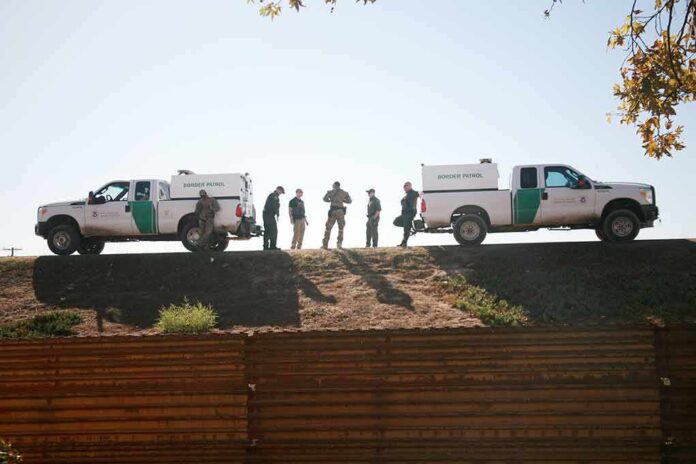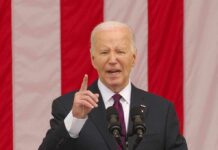UN and NGOs push for long-term funding to support migration through the U.S. southern border, despite potential restrictive policies under a renewed Trump presidency.
At a Glance
- UN and NGOs plan to allocate $1.4 billion in 2025 and $1.2 billion in 2026 for migration support
- U.S. contributions to UNHCR increased from $377 million in 2019 to $1.9 billion in 2023
- Republican lawmakers advocate for cutting funding to migration support initiatives
- Trump administration plans sweeping immigration reforms, including mass deportations and increased border surveillance
UN and NGOs Secure Long-Term Funding for Migration Support
The United Nations and several non-governmental organizations (NGOs) are taking proactive steps to ensure continued support for migration through the U.S. southern border. Despite the looming possibility of restrictive policies under a potential second Trump administration, these organizations have established a strategy to allocate substantial funds for the coming years.
According to the UN’s 2025-2026 “Regional Refugee and Migrant Response Plan” (RMRP), $1.4 billion is earmarked for 2025, followed by $1.2 billion for 2026. This funding is intended to provide continuity of aid, including monetary and housing assistance, which might otherwise face reductions under more restrictive immigration policies.
Inside an NGO in Eagle Pass in January of 2022—Migrants who were just processed and released by Border Patrol pray alongside a pastor. The volunteer who gave me the tour said they did this nightly as it was important to those passing through 🙏🏼
Several NGOs have been around for… pic.twitter.com/hCzocwkfVk
— Ali Bradley (@AliBradleyTV) October 11, 2024
U.S. Contributions and Political Controversy
The United States has significantly increased its financial support for migration-related initiatives in recent years. Contributions to the United Nations High Commissioner for Refugees (UNHCR) have seen a dramatic rise, jumping from $377 million in 2019 to a substantial $1.9 billion in 2023. This increase in funding has not gone unnoticed and has sparked considerable debate among lawmakers.
“Under the Biden administration, U.S. dollars are being funneled through the United Nation’s IOM into programs that facilitate and encourage illegal migration into our own country,” said Texas Rep. Lance Gooden.
The use of U.S. taxpayer money to fund migration support has become a point of political contention. Some Republican lawmakers are advocating for significant cuts to this funding, arguing that it encourages illegal immigration and goes against the interests of American citizens. This push for funding reduction stands in stark contrast to the UN and NGOs’ efforts to maintain and increase support for migrants.
Potential Impact of a Second Trump Administration
The possibility of a second Trump administration has raised concerns about the future of immigration policies and their economic impact. Two scenarios, termed “high immigration” and “low immigration,” have been analyzed to predict potential outcomes.
In the “low immigration” scenario, experts predict a potential net outmigration, with 2025 migration at -650,000. This could have significant economic implications, potentially reducing 2025 GDP growth by 0.1 to 0.4 percentage points, equivalent to a $30 to $110 billion decrease. Conversely, the “high immigration” scenario anticipates positive immigration flows of 1.3 million in 2025, which could lead to more favorable economic outcomes.
Proposed Immigration Reforms and Technological Advancements
The Trump campaign has outlined plans for sweeping immigration reforms, including mass deportations, ending birthright citizenship, militarizing the border, and increasing surveillance. These proposed changes are expected to significantly impact the border and surveillance industry, with increased spending on enforcement and AI-driven technologies.
AI-powered border surveillance, including drones, ground sensors, and robotic devices, is anticipated to play a larger role in border management. This technological shift raises important questions about human rights and privacy concerns, particularly as few laws currently regulate AI use in border security.
As the debate over immigration policy and funding continues, the actions of the UN, NGOs, and potential future administrations will likely have far-reaching consequences for both migrants and the U.S. economy. The coming years will be crucial in determining the balance between humanitarian aid, border security, and economic considerations in shaping the nation’s approach to immigration.
Sources:
- https://www.brookings.edu/articles/immigration-and-the-macroeconomy-second-trump-administration/
- https://www.justsecurity.org/105662/border-technologies-under-second-trump-administration/
- https://www.dailywire.com/news/as-trump-2-0-approaches-ngos-continue-to-fund-mass-migration-with-u-s-tax-dollars
- https://cis.org/Bensman/Oped-Trump-20-Approaches-NGOs-Continue-Fund-Mass-Migration-US-Tax-Dollars











